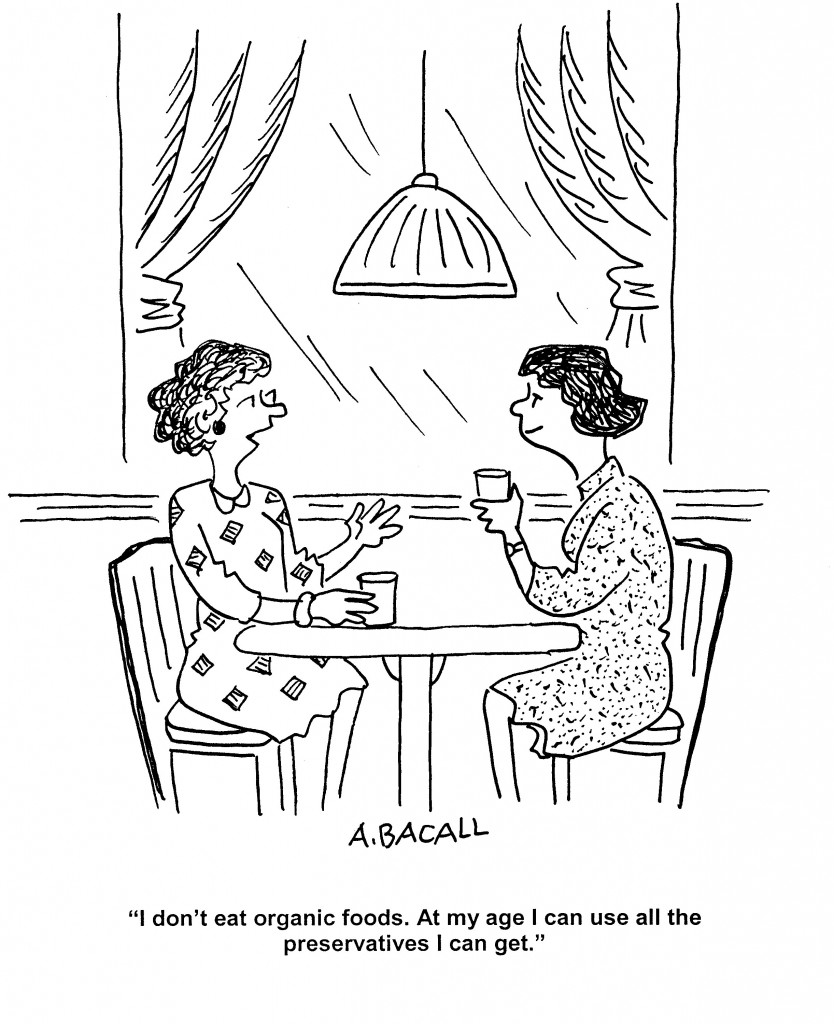Mirror mirror…
[Girl before a mirror. Pablo Picasso. Boisgeloup, March 1932]
What do you see when you look in the mirror? Or perhaps a better question is ‘who?’
I have noticed something odd, something that is sending me into a bit of a tizzy.
I feel older. And the reflection I see in the mirror is not something that I like very much.
It’s a bit of a shock, as I’ve always managed to keep the aging bug at bay. I’ve spent years exercising daily, eating right and engaging in strategies that are supposed to boost physical and emotional health and wellbeing.
Yet, something is missing. A piece of me.
I spend a lot of time on this blog talking about aging and the importance of seeing yourself from the inside out. I’ve discussed what it is like to become invisible in the workplace, how our bodies are redefining themselves, often without our help or intervention, and how old habits are starting to die hard, really hard. I’ve tried to empower you to take charge and accept, but not without going down with a fight against the more negative aspects of the aging process. I wonder where I’ve lost myself within this equation.
Anais Nin is quoted as writing that we don’t see things are they are, we see things are we are. But what happens when what we are, what we’ve become, is skewed by our changing vision? How do we navigate that path without the self-criticism and negative self talk, you know, that voices that we use to tell ourselves that we look old, that our face is sagging and the lines are growing deeper, that the cellulite is more defined, that our midsection appears to have added a bit of extra cushion? When is the appropriate time to rewind and erase the tape and create a new voice?
That time, at least for me, is now.
I apologize for the personal nature of this post, the rambling self indulgence; it’s likely that you are wondering what the heck I am talking about and why, after all, this blog is about evidence and information and data. But I realized this past weekend that the me in ‘menopause’ has somehow gotten lost in the Flashfree shuffle. And that when I actually take stock, I feel a bit long in the tooth.
I’d like to hear from you, dear sisters, about your favourite strategies for overcoming self doubt, for changing the mirror image, for turning off the voices and for freeing your body, mind and soul from the aging bug.
This week, I am turning myself over to you. And I want to hear from you.
Who do you see when you look in the mirror?
Read More
Still feeling like a shadow of your former self?
Must be “Low T,” right?
Low T is a global problem of epic proportions. In fact, UK researchers are reporting that testosterone prescribing has reached epidemic proportions, with an increase in prescriptions by almost 90% between the years 2001 and 2010. Moreover, the majority of these prescriptions have not been for an established hypogonadism (a decline in the functional ability of the testes to produce ample amounts of testosterone. This can lead to erectile dysfunction, low libido and a low sex drive. Aside from sexual dysfunction, hypogonadism can also cause depression, lethargy and fatigue. And yet, the most recent statistics from the Urology Care Foundation suggest that low T is a problem mostly affecting men 60 and above. In the UK study, only 6.3% of men had definite hypogonadism. So, what gives?
Money.
A few years ago, the pharmaceutical industry jumped on the male menopause wagon and the current campaign is a doozie. The condition? Low T, which is better known as low testosterone, andropause or the commonly used misnomer, “male menopause.” In fact, you can take a simple quiz to learn if you have Low T and if you need to speak to your doctor.
I’ve written about male menopause and have also directed readers to data that shows that it may not be all that it’s cracked up to be. Is it irritable male syndrome? Or is it another marketing tool to sell drugs to unsuspecting men who are aging and losing their virility?
Truly, if you are feeling like a shadow of your former self, there may be other things at play than testosterone. You might want to speak to your healthcare practitioner before jumping on the Low T wagon. Too much testosterone can lead to heart disease and negatively affect the prostate gland.
The medical community remains unconvinced about the condition and the need to treat it. In fact, that might be why, in 2011, University of Pennsylvania researchers started putting it to the test with the T Trial, which may solve this question once and for all.
Read MoreSocial interactions are good for your health
This isn’t the first time that I’ve written about the benefits of social interactions in terms of health. And it likely won’t be the last! In fact, data collected in roughly 53,000 Americans over a 36 year time period show that both personal and impersonal interactions, that is, visits with relatives, neighbors or friends or in bars (personal) or memberships in in organization, sports clubs, youth groups, etc (impersonal) can have a significant impact on health.
Strangely, during the time of the study (which is published in the March/April issue of the American Journal of Health Promotion), significant declines were seen in impersonal and certain types of personal interactions. People were volunteering less or spending less time in cause-related organizations. And, people spent less time visiting neighbors.
The middle-agers happened to be the group with the largest income levels, highest workforce participating and greatest full time working percentage. And while they had opportunity costs when it came to time and how they chose to spend it when they weren’t working, it appeared that devoting more time to friendships, especially close friendships, was important to health. So was the time spent in health/sports clubs.
The takeway? Having friends or other interpersonal interactions tended to be associated with a higher probability of being in very good or excellent health.
However, timing is everything and this information was collected before the economic downswing and the loss of millions of jobs, especially among mid-lifers. Still, it does offer up an important message:
The cost of time may be greater than one believes. Be sure that part of your time allotment is spent cultivating and spending time with friends. They are critical to mental wellbeing, staving off depression, increasing longevity and reducing stress.
Speaking of which….it’s
Be sure to reach out and touch someone in your inner or outer circles who you’ve not interacted with of late. Call a friend, drop a note, extend a helping hand. That time allotment might be the best you spend today.
Read MoreReinventing Women: Send me an angel…meet Beth Collins
 What do you do when you put out an open call for life stories and an angel answers? That’s Beth Collins, co-creator of Elizabeth’s House, a resource center for women who want to rethink, renew, and reinvent their lives. Truly, I could not have found a more ideal person for a series about reinvention.
What do you do when you put out an open call for life stories and an angel answers? That’s Beth Collins, co-creator of Elizabeth’s House, a resource center for women who want to rethink, renew, and reinvent their lives. Truly, I could not have found a more ideal person for a series about reinvention.
Who is Beth Collins? Beth is a personal and creative coach and her story of reinvention is focused on beginnings. To Beth, reinvention starts “from where you are to all that you know. It’s saying yes to something more and then creating the space in your life to find out what that more looks like.”
She explains that her calling to create on behalf of other women came during a time in her life when she had reluctantly left a dream job in college administration to become a working and then full-time, stay-at-home mom. However, answering her ultimate calling has been anything but easy; in fact, her ever-shifting path has been wrought with roadblocks and detours. When she left the corporate world for a world of play dates, room mothering, volunteer committees and booster clubs, she still had an urge to serve women in transition, an itch to scratch that would take more than six years to realize as she followed and supported her husband through multiple relocations. At the age of 46, just as she was finally hitting her stride and passion, she was sidelined again: “I got hit by a truck, literally.”
Through a ‘jaws of life’ rescue and time in the neuro-ICU, Beth faced yet another tough decision: rest or keep going?
In the mid 1980s, Austrian Monk Bhanke Dhammika wrote the Dhammavadaka, a poem designed to present inspiring aspects of a Buddhist’s life. One line in particular resonates:
None can live without toil and a craft that provides your needs is a blessing indeed. But if you toil without rest, fatigue and weariness will overtake you and you will be denied the joy that comes from labour’s end.
Like Dhammika, Beth realized the value in rest and so, she resigned from yet another job that she had grown to love to allow her body proper time to heal. Not surprisingly, in this quiet she heard yet another calling and in 2006, began a mentoring and coaching business for women who were ready to reinvent their lives. “I had clients in five states and was curious when I realized that these women were all asking for the same things,” Beth explains. “They longed for a community that would support their journey of change. Inspired by their requests, I began envisioning what a place like that would look like and in 2007, opened the doors to Elizabeth’s House, a gathering place for women who want to reinvent their lives.”
Elizabeth’s House embodies a lifetime of dreams combined with a unique passion to help women. Beth’s personal story? It’s one of “pure belief in a dream, letting go of the outcome and saying yes to what showed up.” And while she says that some would characterize that attitude as courageous while others may call it crazy, the women who’ve landed at the door of Elizabeth’s House call it a gift. “Together we rally when a woman quits the job she hates to create something new and when returns to that job after realizing that it wasn’t the job she hates. We rally around trying new things, getting it wrong, marriage, divorce, cancer and even suicide. It’s been life -changing for the women who find us and for me.”
It’s not surprising that women helping women lies at the core of Beth’s story of reinvention. She says that unquestionably, “What I’ve learned, what I know beyond any doubt,” is that self-help books, online support and endless “coaching” programs are not enough for women who long to reinvent. They are going to need other women who are willing to tell the truth about their lives. They need to know that they are not alone in their desire for change.”
Say yes and let go of the outcome(s). You may take a beating to get your wings but eventually, like Beth’s they’ll grow into something beautiful.
Read More
What’s your ‘I’m fat, I’m old’ talk quotient?
When was last time you thought to yourself, ‘I’m fat?’ How about ‘I’m old?’ Sound familiar?
If you are like most women, these words have likely crossed your mind at least once if not several times. And while we tend to pay lots of attention to the ‘fat talk’, less attention appears to be paid to how ‘old talk’ similarly impacts how women feel about themselves and perceive themselves. Not surprisingly, both are connected to the thin-ideal/young-ideal concept of beauty in Western society; just look at the number of products, drugs, and surgical procedures feared towards the preservation of youth and a youthful, wrinkle-free, cellulite-free appearance. As researcher Carolyn Beck writes in the Journal of Eating Disorders, “as women age, they increasingly move away not just from being thin but also from fulfilling the young element of the thin-young ideal. Accordingly, aging creates new opportunities for discrepancies between women’s bodies and cultural body ideals.”
Dissatisfaction with appearance and one’s body has been known to be correlated with binge eating, emotional eating, stress, low self-esteem, depression, and use of unhealthy weight control behaviors. When Dr. Beck and her colleagues set out to discover if fat talk and old talk had the same effect on body image, they found that among a sample of over 900 women, those who reported frequently talking about how fat they were or how old they were tended to have more negative body images. Importantly, an overwhelming majority of women — 81% — engaged in ‘fat talk’ at least occasionally and a full third reported frequently ‘fat talking.’ Their aging peers? At least 66% engaged in ‘old talk’ with friends and family occasionally, while 15% reported talking old more often. What’s more, the frequency of old talk tended to increase the older that women became.
Dr. Beck says that women’s self talk, be it about fat/thin or young/old, is an important public health issue as are the factors that play a role in causing, sustaining or deepening a women’s displeasure with her body. And while the two ideals are related, when women are young, the most salient aspect of self image is ‘thinness;’ conversely, as they age and enter midlife, both thinness and youth appear to be important. Overtime, thinness loses out to youthful.
When do we, as women, give ourselves a break? By buying into the thin-ideal/young-ideal constructs, we are robbing ourselves of the opportunity to recreate our individual ideals, those that work best for ourselves. When 1,000 women between the ages of 18 and 87 agree that image plays such an important a role in how they view themselves, it should cause us to pause. We seem to be doing a lot of talking without saying or DOING much, other than to self-criticize, self-demoralize, self-dissatisfy, self-disconnect and self-sabotage. I would posit that it’s time to change the dialogue.
Read More










